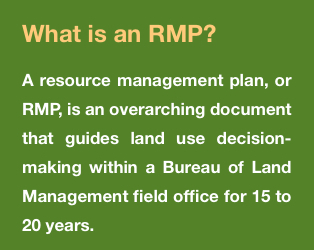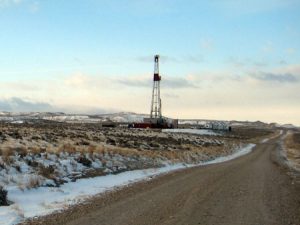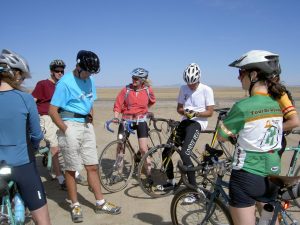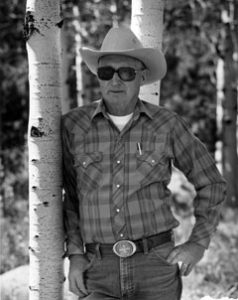
Photo by Jeff Vanuga
THE LOOMING THREAT that the greater sage-grouse might be listed as an endangered species spurred Wyoming to adopt a new approach to protect the celebrated bird.
As a result, the Cowboy State has emerged as the regional leader in re-thinking sage-grouse policies, focusing its conservation efforts on sage-grouse “core” habitat areas.
Following Wyoming’s lead, Montana’s state game agency recently announced its own “core area” strategy.
There is some disagreement amongst Wyoming’s conservation community about the value of this core area approach, said Sophie Osborn, wildlife biologist with the Wyoming Outdoor Council.
But Osborn said while the approach has some limitations, she believes Wyoming’s attempt to conserve core sage-grouse habitat might be the West’s best bet for maintaining viable sage-grouse populations, and for keeping the bird off the endangered species list.
Click here for a map of Wyoming’s core sage-grouse habitat areas.
If properly implemented, Wyoming’s approach could offer other states a model for finding a balance between energy development and the protection of this vulnerable species, Osborn said.
A MAJORITY OF THE NATION’S GREATER SAGE-GROUSE NOW LIVE IN WYOMING
Sage-grouse numbers have been in decline throughout the West for decades, and today 54 percent of the remaining greater sage-grouse in the United States live in Wyoming.
The U.S. Fish and Wildlife Service’s decision whether to list the sage-grouse as an endangered species will be swayed, at least in part, by the strength and efficacy of Wyoming’s policies toward the bird.
One criterion for the federal government’s ultimate listing decision, Osborn said, is the answer to the following question. Are there regulatory mechanisms in place that will adequately protect the species?
“That’s why Wyoming has worked so hard to develop this core sage-grouse concept,” Osborn said. “To make sure there is an existing, adequate regulatory mechanism in place.”
Wyoming’s actions will likely play a key role in determining whether overall sage-grouse populations begin to stabilize or continue to decline.
“State and federal agencies, conservation groups, the energy industry—they all understand that what we do in Wyoming really matters,” Osborn said. “It might seem as if we’re obsessing over this bird, but Wyoming has to get this right, and we all know it.”
In addition to the ecological motivations for preserving sage-grouse “core” areas, there are also economic incentives for keeping these grouse populations healthy.
If the sage-grouse were listed as an endangered species, energy extraction and other types of development could be subjected to more stringent regulations and possibly curtailed throughout the bird’s range, and not only in core habitat areas. In a state that relies heavily on revenues from mineral extraction operations, such a possibility gets lawmakers’ attention.
Sometimes just the threat of an endangered species listing can be the impetus for better wildlife management and development policies, Osborn said.
WIND DEVELOPERS LEFT OUT IN THE COLD?
The burgeoning wind energy industry has had a particularly difficult time adapting to Wyoming’s sage-grouse core area conservation strategy.
As part of this strategy, Wyoming will not permit the development of wind farms in core areas until wind developers can show that their activities will not have a negative impact on sage-grouse populations.
In a letter sent to Secretary of the Interior Ken Salazar in July 2009, wind industry representatives warned that such a requirement would abruptly halt wind energy development in Wyoming’s core areas and have “deleterious effects on renewable energy development across the Western United States.”
The Wyoming governor’s office maintains, however, that 86 percent of the state’s “economically viable wind areas” are outside of sage-grouse core areas, and so the state still has ample opportunity to develop wind, without placing its, and the West’s, sage-grouse populations at risk.
Some developers—frustrated by their inability to build wind farms in core areas until the effect of turbines on grouse is studied—feel that the wind industry was left out of the process when sage-grouse core areas were developed.
But Bob Budd, head of the Governor’s sage-grouse task force, said wind energy development had not yet emerged as a prominent issue when the team developed the core area strategy. The push for widespread wind development is a relatively recent phenomenon in Wyoming.
A representative of the wind energy industry has since joined the Governor’s sage-grouse team.
Horizon Wind Energy’s Simpson Ridge Project near Medicine Bow was an early casualty of the state’s rigorous stance on protecting core areas, even after the company committed to doing research to document the impacts of turbines on grouse.
 However, bird advocates and energy watchdog groups, including the Wyoming Outdoor Council, argue that Horizon knew from the start about the important sage-grouse breeding areas near the company’s proposed wind farm, and the company’s promise to spearhead a research study was simply an attempt to justify sacrificing these areas.
However, bird advocates and energy watchdog groups, including the Wyoming Outdoor Council, argue that Horizon knew from the start about the important sage-grouse breeding areas near the company’s proposed wind farm, and the company’s promise to spearhead a research study was simply an attempt to justify sacrificing these areas.
“If, as we suspect, turbines cause grouse declines and displacement, we risk losing our healthiest grouse populations by conducting these studies in core areas,” Osborn said. “Studies should be conducted in non-core areas, where we have fewer grouse to lose; otherwise, we increase the risk of an endangered species listing for the grouse.”
Osborn’s comments echo those of the U.S. Fish and Wildlife Service, which stated in July 2009 that building wind farms in core areas, even for research purposes, “would negate the usefulness of the core area concept,” and undermine a key regulatory mechanism designed by Wyoming to protect its grouse populations.
Soon after the Fish and Wildlife Service issued its statement in support of making core areas off-limits to wind development, Horizon withdrew its construction and research proposal, because the project would have enveloped, and threatened, 15 active sage-grouse breeding grounds, or leks—where these chicken-like birds perform their distinctive courtship displays and choose mates.
Although the impacts of oil and gas development on sage-grouse are fairly well understood, scientists have yet to examine the effect of wind turbines on grouse. Until these impacts are known, agencies must rely on indirect, but relevant, scientific information that suggests that grouse will be displaced by wind turbines.
INTRODUCING TALL STRUCTURES INTO A SHORT ECOSYSTEM
Having evolved in open, treeless habitat—in what some refer to as the “sagebrush sea”—sage-grouse show a strong aversion to vertical structures. Tall objects do not occur in the bird’s natural surroundings, and they can be used as perches by raptors that prey on grouse.
Sage-grouse populations have declined where trees, transmission lines, and oil and gas development have encroached on their habitat, Osborn said. In addition, grouse have been eliminated from habitats fragmented by roads and other forms of development.
Given these facts—coupled with the threat that sage-grouse could be listed as an endangered species without a robust state-level regulatory mechanism—the wind industry will have to focus for now on developing wind farms in areas with few or no sage-grouse, such as in the eastern portion of the state, Osborn said.
Many people in Wyoming and beyond view sage-grouse core area protection as the best hope for safeguarding a declining species, and the best chance to avoid an endangered species listing that would complicate not just wind energy, but all types of energy development in the West.



 Photo by Scott Copeland
Photo by Scott Copeland



 However, bird advocates and energy watchdog groups, including the Wyoming Outdoor Council, argue that Horizon knew from the start about the important sage-grouse breeding areas near the company’s proposed wind farm, and the company’s promise to spearhead a research study was simply an attempt to justify sacrificing these areas.
However, bird advocates and energy watchdog groups, including the Wyoming Outdoor Council, argue that Horizon knew from the start about the important sage-grouse breeding areas near the company’s proposed wind farm, and the company’s promise to spearhead a research study was simply an attempt to justify sacrificing these areas.









